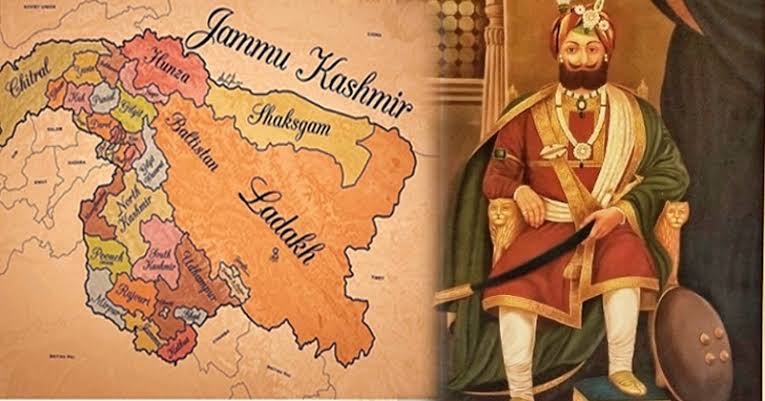Remembering 16 March 1846: The Establishment of Dogra Rule in Jammu and Kashmir
16 Mar 2024 17:23:51

On March 16, 1846, a significant chapter in the history of Jammu and Kashmir unfolded as the Dogra rule was established in the region.
This marked the beginning of a new era under the leadership of Maharaja Gulab Singh of the Dogra dynasty. The Dogras, a Hindu Rajput clan, played a crucial role in shaping the political landscape of the region and their rule had a lasting impact on the culture and society of Jammu and Kashmir.
The transition to Dogra rule occurred as a result of the Treaty of Amritsar, signed between the British East India Company and Maharaja Gulab Singh of Jammu and Kashmir. Under the terms of this treaty, Gulab Singh was recognized as the independent ruler of Jammu and Kashmir in exchange for a payment of Rs 75 lakh to the British.
The establishment of Dogra rule brought about profound changes in the political, social, and economic landscape of Jammu and Kashmir. Maharaja Gulab Singh and his successors implemented policies that shaped the governance and administration of the region.
The Dogras were known for their strong leadership and administrative capabilities, and under their rule, Jammu and Kashmir saw a period of relative stability and prosperity.
The Dogras introduced a system of feudal administration, with a focus on centralized authority and a hierarchical system of governance.They also promoted the use of the Dogri language and culture, which played a significant role in shaping the identity of the region.
One of the enduring legacies of Dogra rule was the consolidation of the princely state of Jammu and Kashmir as a cohesive political entity.
The Dogras played a key role in the development of the region, building infrastructure, promoting trade and commerce, and fostering a sense of unity among the diverse communities that inhabited the area.
Over the years, the Dogra rule faced challenges and conflicts, particularly during the partition of India as the region became the bone of contention between the two newly independent nations of India and Pakistan. In 1947, at that time, the Dogra ruler of J&K Maharaja Hari Singh acceded to India, which Pakistan could not digest, leading to an attack on Jammu and Kashmir. As a result, Pakistan illegally occupied more than 30 percent of Jammu and Kashmir.
Despite these challenges, the legacy of the Dogra rule continues to influence the history and identity of Jammu and Kashmir to this day.